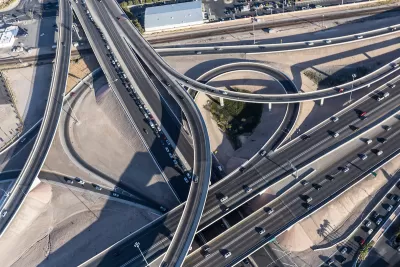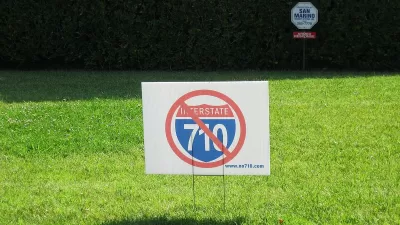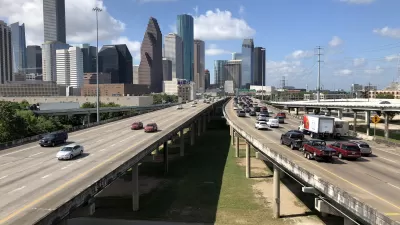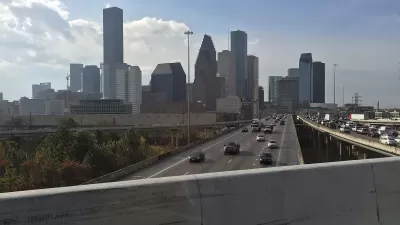A state plan to widen an interstate that cuts through downtown Las Vegas would displace hundreds of homes and businesses.

Las Vegas residents are questioning a proposal by the Nevada Department of Transportation to widen Interstate 515, also known as US-95, in downtown Las Vegas, writes April Corbin Girnus in Nevada Current.
NDOT says a massive increase in traffic volumes since the freeway was built in 1968, along with aging infrastructure and outdated design, are causing congestion and “creating potentially dangerous driving conditions.”
“But at least three dozen downtown households are expected to be displaced as part of the project, which would take several years and billions of dollars to complete. Upwards of 350 households potentially could be displaced, depending on which design the agency decides to pursue.” Local residents say the widening would primarily benefit suburban commuters at the expense of air quality in the city’s core.
NDOT has offered up eight possible alternatives for the project, including a ‘no-build’ option that would leave the roadway unchanged but call for safety improvements. The article notes that “None of the plans include walking and bike trails adjacent to the freeway, which is something NDOT proposed in its original designs but axed after hearing concerns about such areas attracting homeless people.”
However, “As part of its project mitigation plan, NDOT has proposed committing $20 million for ‘Complete Streets’ projects, $15 million to replace on a 1-to-1 ratio any household units it razes as part of right-of-way acquisition, $10 million for ‘resources for the unhoused community,’ and $10 million for an indoor recreation area to replace the existing ones it would tear down.”
FULL STORY: ‘Who does this help?’ US-95 widening project draws ire from downtown residents

Trump Administration Could Effectively End Housing Voucher Program
Federal officials are eyeing major cuts to the Section 8 program that helps millions of low-income households pay rent.

Planetizen Federal Action Tracker
A weekly monitor of how Trump’s orders and actions are impacting planners and planning in America.

Ken Jennings Launches Transit Web Series
The Jeopardy champ wants you to ride public transit.

California Invests Additional $5M in Electric School Buses
The state wants to electrify all of its school bus fleets by 2035.

Austin Launches $2M Homelessness Prevention Fund
A new grant program from the city’s Homeless Strategy Office will fund rental assistance and supportive services.

Alabama School Forestry Initiative Brings Trees to Schoolyards
Trees can improve physical and mental health for students and commnity members.
Urban Design for Planners 1: Software Tools
This six-course series explores essential urban design concepts using open source software and equips planners with the tools they need to participate fully in the urban design process.
Planning for Universal Design
Learn the tools for implementing Universal Design in planning regulations.
Ada County Highway District
Clanton & Associates, Inc.
Jessamine County Fiscal Court
Institute for Housing and Urban Development Studies (IHS)
City of Grandview
Harvard GSD Executive Education
Toledo-Lucas County Plan Commissions
Salt Lake City
NYU Wagner Graduate School of Public Service





























